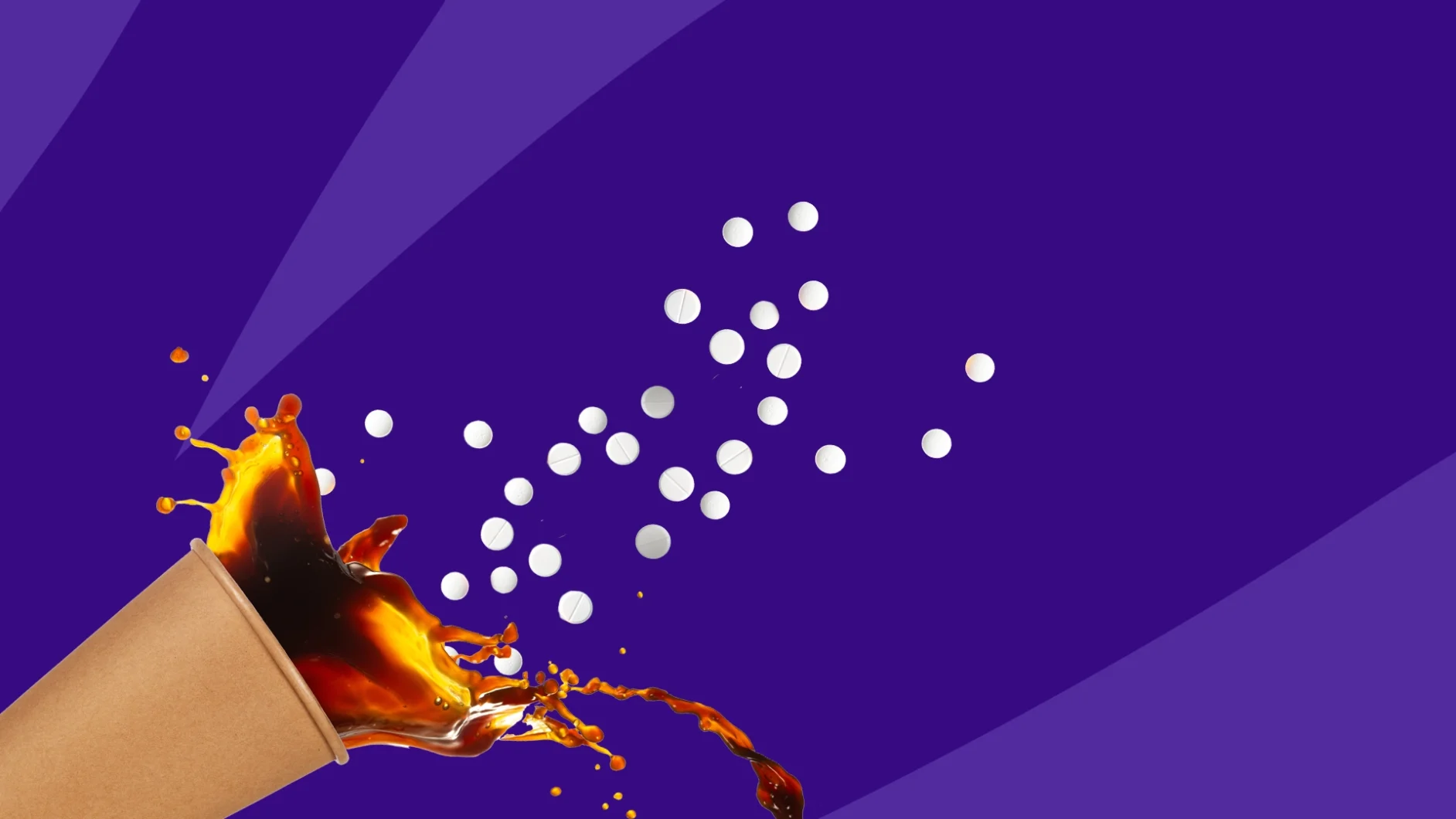Key takeaways
Meloxicam doesn’t contain any caffeine, but it can be irritating to the stomach and increase your risk of GI distress.
Consuming moderate amounts of caffeine is likely safe for people without existing GI disorders.
Taking meloxicam with food can help alleviate some side effects.
People with osteoarthritis or rheumatoid arthritis are sometimes prescribed a medication called meloxicam to manage symptoms of pain, swelling, and stiffness. Meloxicam is a nonsteroidal anti-inflammatory drug (NSAID) that treats some arthritis symptoms by blocking the prostaglandins, or chemicals, that cause pain and inflammation.
However, many medications, supplements, and other substances—including caffeine—interact with meloxicam, leading some people to wonder if they can still consume their daily cup (or cups!) of coffee when taking this drug. We asked experts about the potential interaction between coffee and other caffeinated beverages and meloxicam; here’s what they had to say.
Do meloxicam and caffeine interact?
Unlike some types of pain relievers, meloxicam doesn’t contain any caffeine. But that doesn’t mean there aren’t any interactions between meloxicam and caffeine. Caffeine increases the analgesic, or pain-relieving, effects of meloxicam, according to Patrick Nuzzo, DN, a functional nutritionist and cofounder of Southwest University of Naprapathic Medicine. A 2020 study in rats suggests that the analgesic effect of meloxicam may be as high as 76% when combined with caffeine.
While that might sound like a good thing, there are risks to combining caffeine with meloxicam. “Caffeine can increase the pain-relieving effects of meloxicam, which may make some people think their pain is better controlled than it actually is,” explains Erika Gray, Pharm.D., cofounder of Toolbox Genomics.
Plus, caffeine and NSAIDs can irritate the stomach lining even when taken separately—putting the two substances together increases the chance of gastrointestinal irritation and the risk of ulcers and intestinal bleeding even further, adds Dr. Gray.
Can I drink coffee while taking meloxicam?
Generally, it’s safe to mix meloxicam and coffee, says Nuzzo, but some people should be wary of the combination, including anyone who experiences digestive distress or has existing GI disorders. If you don’t have any existing GI conditions, you can probably drink a couple of cups of coffee each day.
The amount of caffeine the body tolerates is different for everyone, but the Food & Drug Administration (FDA) recommends staying below 400 milligrams per day. That’s the equivalent of about four, eight-ounce cups of regular coffee. Talk to your healthcare provider if you aren’t sure how much caffeine you can safely consume each day.
Is caffeine harmful for people taking NSAIDs?
Because caffeine has the potential to worsen the side effects of meloxicam, Dr. Nuzzo says it may do the same for the side effects of other types of NSAIDs, too, like naproxen or ibuprofen. He also says caffeine has a diuretic effect, which means it may not be the best choice for people with chronic pain or inflammation in need of extra hydration.
That doesn’t mean you can never drink caffeinated beverages if you’re taking NSAIDs, but it’s important to consider how often you take them. Drinking reasonable amounts of coffee or caffeinated beverages is not harmful to people taking NSAIDs from time to time, says Dr. Gray, but there are some caveats with ongoing use: In addition to GI irritation and the illusion of better pain control noted earlier, she also says meloxicam can also constrict blood vessels, which may lead to an increase in blood pressure (especially when combined with caffeine).
Best practices for people taking meloxicam
Whether you’re taking meloxicam intermittently or on a regular basis, there may be some other dietary factors to consider on top of your caffeine intake. Here are some best practices for taking meloxicam and reducing dietary interactions.
- Take meloxicam doses with food, not on an empty stomach.
- Try to take meloxicam for the least amount of time necessary, says Dr. Gray, and talk to your provider about reducing GI side effects if regular use is prescribed.
- Avoid or limit acidic foods and drinks, Dr. Nuzzo advises, since these can increase GI irritation when taking NSAIDs like meloxicam.
- Use caution if you have existing cardiovascular disease, GI disease, kidney impairment, chronic liver disease, or an increased risk of bleeding, says Dr. Gray.
- Reduce your alcohol consumption. Regular alcohol use combined with ongoing use of NSAIDs can also increase your risk of GI irritation and distress.
- Quit smoking. This habit also increases the risk of GI issues, raises blood pressure, and makes your likelihood of experiencing side effects while taking NSAIDs even greater.
Finally, if your provider says it’s safe for you to continue drinking coffee while taking meloxicam, Dr. Gray suggests not ingesting them at the same time; instead, separate your caffeine from your meloxicam by at least two hours.
- Investigation of the peripheral analgesic activity of oxicams and their combinations with caffeine, Turkish Journal of Pharmaceutical Sciences (2020)
- Spilling the beans: How much caffeine is too much?, Food & Drug Administration
- Caffeine content for coffee, tea, soda and more, Mayo Clinic (2022)
- Caffeine, a risk factor for osteoarthritis and longitudinal bone growth inhibition, Journal of Clinical Medicine (2020)
- Caffeine, coffee, tea and risk of rheumatoid arthritis: Systematic review and dose-response meta-analysis of prospective cohort studies, Frontiers in Nutrition (2022)



